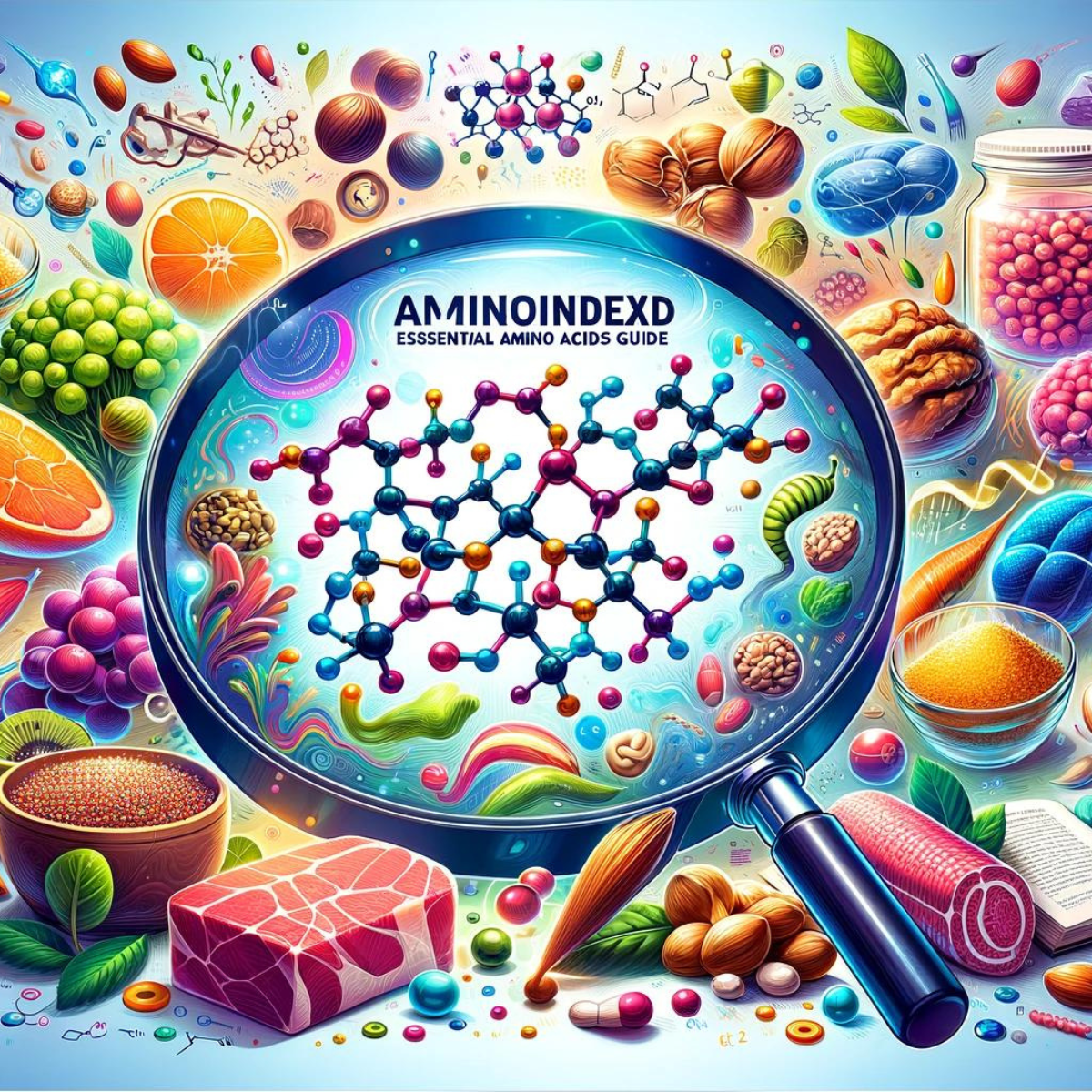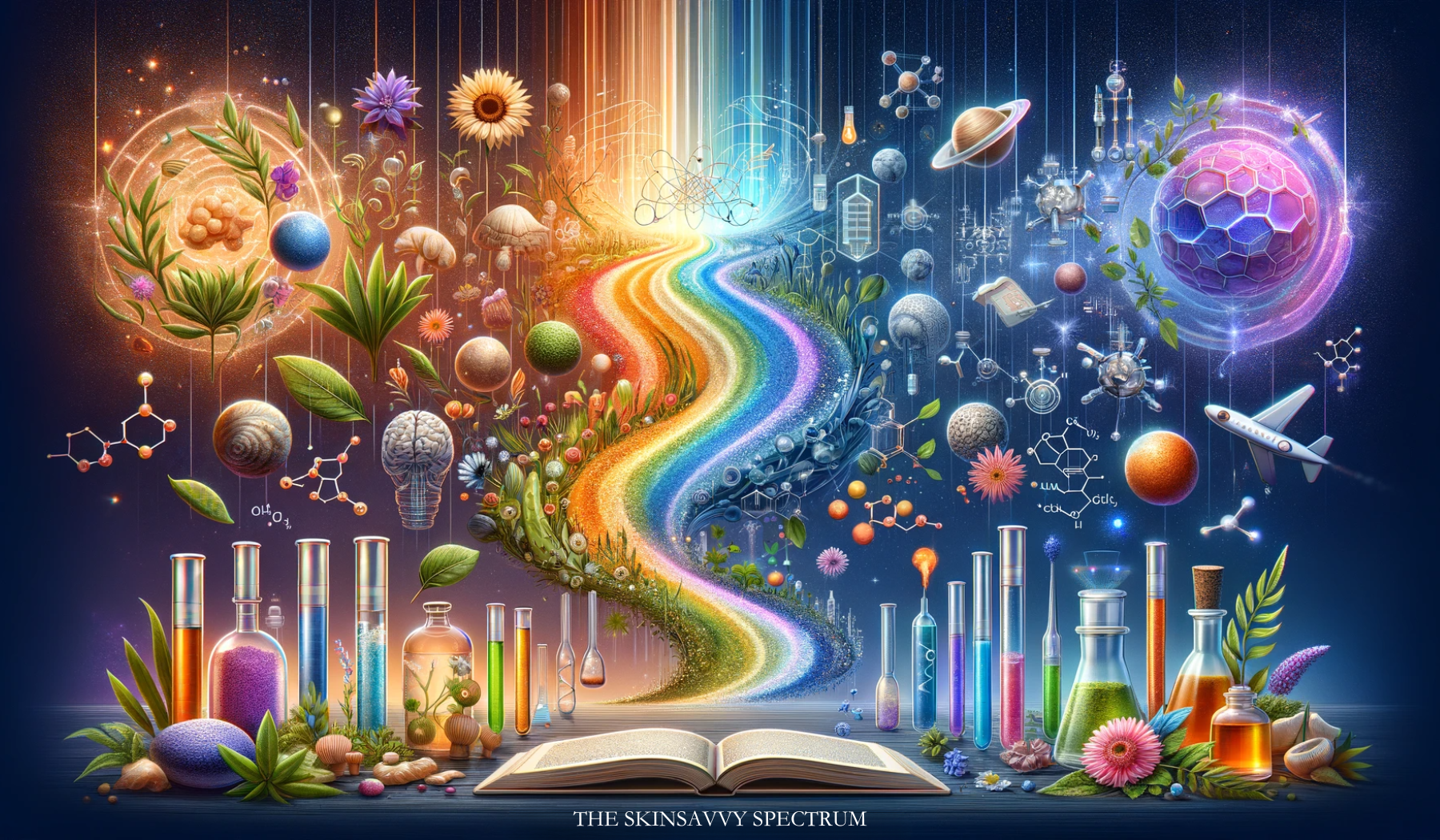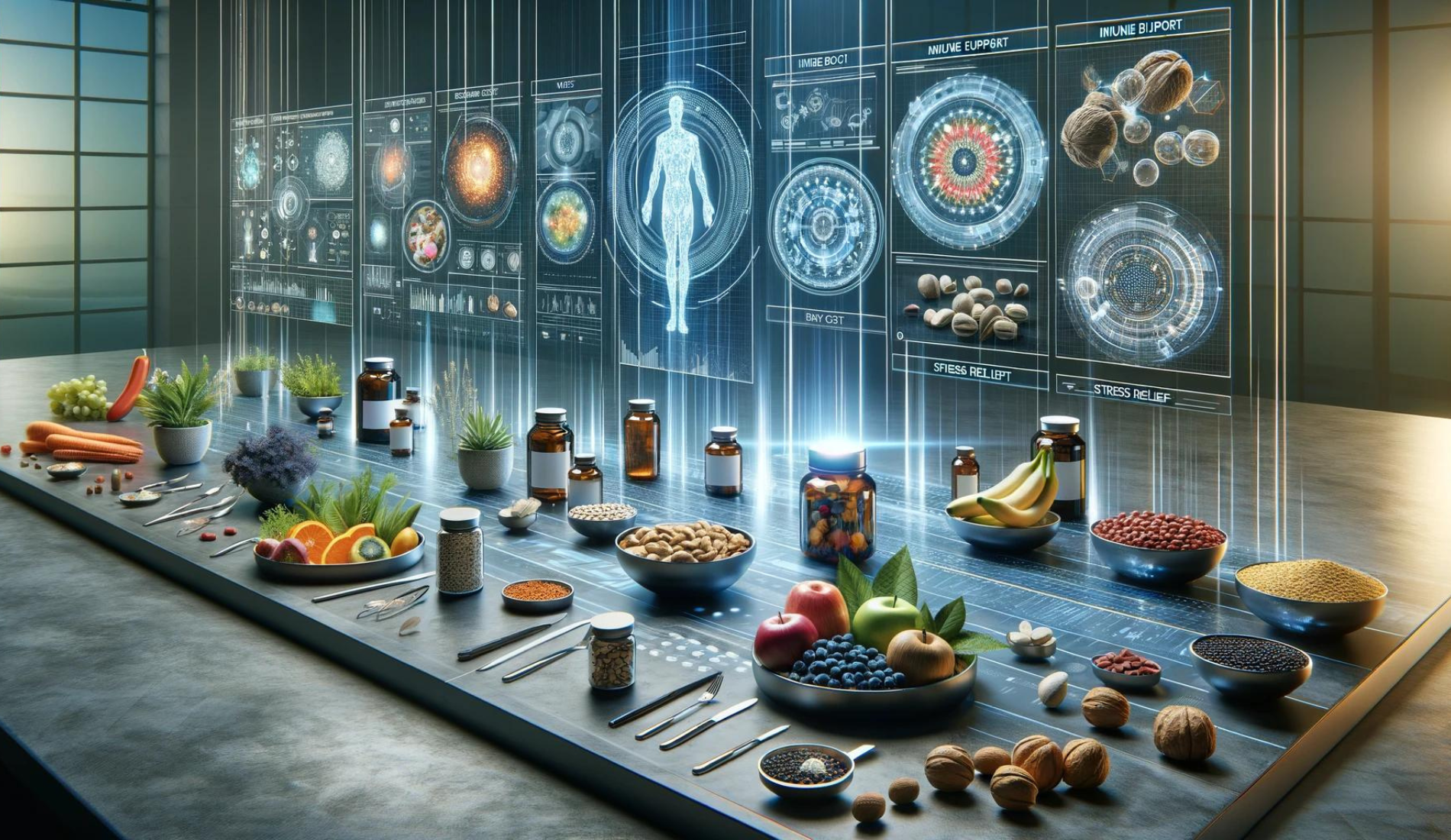Table of Contents
Introduction
Navigating the ebbs and flows of your menstrual cycle can often feel like being aboard a ship in uncharted waters. Each phase, from the calm before the storm to the turbulent tides and the serene aftermath, brings challenges and changes, especially regarding your body's nutritional needs. Welcome to "Crimson Tide Nutrition: Balancing Your Plate & Cycle," your compass and map for dietary guidance tailored to each menstrual cycle phase.
In this guide, we embark on a journey through the cyclical seas, exploring how the foods you eat can influence your physical well-being and your emotional and hormonal balance. From the pre-menstrual whispers of cravings to the full-blown storm of menstruation and the following peaceful lull, we'll uncover the dietary do's and don'ts that can help you navigate these waters with grace and vitality. So, hoist the sails and prepare to discover how aligning your plate with your cycle can lead to smoother sailing through the crimson tides of each month.
Pre-Menstrual Phase: Navigating the Pre-Storm Swells
As the pre-menstrual phase sets in, your body prepares for the monthly cycle, often bringing many physical and emotional changes. Navigating this phase gracefully requires a diet that combats symptoms and prepares your body for the days ahead. Here's how to arm yourself against the pre-storm swells with the right nutritional choices:
Fuelling Up on Complex Carbs
Complex carbohydrates in whole grains, legumes, and vegetables are your allies in maintaining stable energy levels and mood. Unlike their simple counterparts, complex carbohydrates release glucose into your bloodstream gradually, providing a sustained energy source and preventing the mood swings often associated with sugar spikes. Incorporate foods like quinoa, sweet potatoes, and whole-grain pasta into your meals to keep your energy and spirits high.
Magnesium: Your Bloat-Busting Ally
Magnesium is crucial in managing water retention and bloating, common nuisances in the pre-menstrual phase. This mineral helps relax your muscles, including those in your digestive tract, easing bloating and discomfort. Magnesium-rich foods like spinach, almonds, and black beans can be your best friends in minimising these symptoms. Moreover, magnesium calms the nervous system, promoting better sleep and reducing stress levels.
Omega-3s: Soothing the Emotional Seas
Incorporating omega-3 fatty acids into your diet can mitigate the emotional rollercoaster that often accompanies the pre-menstrual phase. These essential fats are known for their anti-inflammatory properties and have been linked to reduced symptoms of depression and anxiety. Foods rich in omega-3s, such as salmon, flaxseeds, and walnuts, can help smooth out the emotional swells, making navigating the turbulent pre-menstrual waters easier.
Steering Clear of Stormy Waters
While adding these beneficial foods to your diet, avoiding those that can exacerbate pre-menstrual symptoms is equally important. High-sodium foods, excessive caffeine, and sugary snacks can increase bloating, disrupt sleep, and lead to energy crashes. Steering clear of these dietary pitfalls can help ensure a smoother journey through the pre-menstrual phase.
By adjusting your diet to include complex carbohydrates, magnesium-rich foods, and omega-3 fatty acids and avoiding certain aggravators, you can better manage the physical and emotional changes of the pre-menstrual phase. Remember, every woman's body responds differently, so it's essential to listen to your own and adjust your dietary choices accordingly for the smoothest sailing through the pre-storm swells.
Follicular Phase: Harnessing New Beginnings
After the quiet retreat of menstruation, your body embarks on the follicular phase, a period of renewal and preparation. This phase marks the time between the first day of your period and ovulation, characterised by the rebuilding of the uterine lining and the maturation of the next egg. It's a phase of rising energy and potential, mirrored by increasing estrogen levels. The right nutritional choices can support your body's natural processes, enhancing fertility, power, and overall well-being.
Phytoestrogen-rich Foods: Balancing Hormones Naturally
As estrogen levels climb, balancing hormones becomes critical. Phytoestrogens, plant-derived compounds that mimic estrogen in the body, can help maintain a harmonious balance.
- What to Eat: Incorporate flaxseeds, soy products, and sesame seeds into your diet. These foods can gently support estrogen levels without overwhelming your system.
Antioxidant-rich Fruits and Vegetables: Supporting Cellular Health
Antioxidants protect cells from oxidative stress, including those involved in developing the uterine lining and egg.
- What to Eat: Focus on colourful fruits and vegetables like berries, citrus fruits, carrots, spinach, and kale. These foods are high in antioxidants and rich in vitamins and minerals that support overall health and vitality.
Quality Proteins: Building Blocks for Growth
Protein is essential for the growth and repair of tissues, including those in the reproductive system. High-quality protein sources can also stabilise blood sugar levels, supporting steady energy throughout this phase.
- What to Eat: Lean meats, fish, tofu, legumes, and eggs are excellent protein sources. They provide the amino acids necessary for the body's preparatory processes leading to ovulation.
Supporting Energy and Vitality
To maximise this phase's rising energy levels, it is crucial to support your body with the proper nutrients while avoiding foods that hinder hormonal balance.
- What to Avoid: Minimise intake of excessive caffeine and alcohol, which can interfere with sleep and hormone regulation. Also, limiting highly processed foods can contribute to inflammation and disrupt hormonal activity.
Embracing the Follicular Phase
This phase is your springtime—a growth, renewal, and preparation period. By nourishing your body with phytoestrogens, antioxidants, and quality proteins, you're laying the foundation for a healthy cycle, optimising fertility, and embracing the energy the follicular phase brings. Remember, everybody is unique, so listen to yours and adjust your diet to what feels suitable, potentially consulting a healthcare provider for personalised advice.
Menstrual Phase: Steering Through the Crimson Waves
As you navigate the peak of the menstrual tide, your body endures the most demanding part of the cycle. Blood loss can deplete iron reserves, leading to fatigue, while hormonal fluctuations may cause cramps and mood swings. However, with the proper nutritional compass, you can easily steer through these crimson waves.
Iron: Replenishing Your Strength
During your period, the loss of menstrual blood means the loss of iron, a vital nutrient that helps transport oxygen in the blood. If not addressed, low iron levels can lead to fatigue, weakness, and anemia. Incorporating iron-rich foods into your diet is vital to replenishing your body's iron stores.
- What to Eat: Lean red meat is a well-known source of heme iron, which is easily absorbed by the body. For vegetarians or those looking for alternative sources, spinach, lentils, and fortified cereals are excellent sources of non-heme iron. Pairing these foods with vitamin C-rich options can enhance iron absorption.
Vitamin C: The Iron Absorption Co-Captain
Vitamin C boosts your immune system and plays a crucial role in enhancing iron absorption from plant-based sources. This is especially important for vegetarians or those who prefer not to consume red meat.
- What to Eat: Citrus fruits like oranges and lemons, strawberries, kiwi, bell peppers, and broccoli are rich in vitamin C and can be easily incorporated into meals or snacks. A glass of orange juice with your iron-fortified breakfast cereal or a side of bell peppers with your spinach salad can make a significant difference.
Staying Hydrated with Water-Rich Foods
Menstruation can also lead to bloating and water retention, making you uncomfortable. Increasing your intake of water and water-rich foods can help alleviate these symptoms by keeping your body hydrated and aiding in detoxification.
- What to Eat: Cucumbers, celery, watermelon, and berries are not only high in water content but also packed with essential nutrients. These foods can help you stay hydrated and feel fuller, which can be beneficial if you experience increased hunger during your period.
Charting Your Nutritional Course
Remember, steering through the crimson waves requires patience and care. Listening to your body and providing it with the nutrients it needs can significantly affect how you feel. While these dietary adjustments can help, it's also essential to maintain a balanced diet and consult with a healthcare provider if you experience severe symptoms.
Post-Menstrual Phase: Charting a Course to Recovery
As the stormy seas of menstruation calm, your body enters a phase of renewal and rebuilding. This is the time to focus on nutrients that aid recovery, support muscle and tissue repair, and prepare your body for the cycle ahead. Emphasising protein, calcium, and fibre can help you navigate this recovery phase with resilience and strength.
Protein: Rebuilding After the Storm
Focusing on protein intake after the menstrual phase is vital for repairing tissues and regenerating cells. Protein supports muscle recovery, helps form new blood cells, and can stabilise energy levels, preparing you for the upcoming cycle phases.
- What to Eat: Incorporate lean protein sources such as chicken, fish, tofu, and legumes into your meals. These foods provide the necessary amino acids for tissue repair and contribute to a feeling of fullness, preventing excessive snacking.
Calcium: Strengthening Your Vessel
Calcium is critical in bone health, muscle function, and nerve signalling. After menstruation, ensuring adequate calcium intake is essential for maintaining bone density and supporting overall bodily functions.
- What to Eat: Dairy products like milk, cheese, and yogurt are calcium-rich. For those who are lactose intolerant or following a vegan diet, fortified non-dairy alternatives, leafy green vegetables, almonds, and sesame seeds are excellent sources of this crucial mineral.
Fibre: Setting Sail for Digestive Health
The post-menstrual phase is an opportune time to focus on digestive health. Fibre aids in digestion, helps regulate blood sugar levels, and supports a healthy gut microbiome. A fibre-rich diet can also help counteract any constipation experienced during the menstrual phase.
- What to Eat: Fruits, vegetables, whole grains, and legumes are all fibre-rich. Berries, apples, carrots, broccoli, lentils, and quinoa are just a few options that can be easily incorporated into your daily meals.
Embarking on a Nutritional Voyage
As you navigate the post-menstrual phase, remember that recovery and preparation are key. Focusing on protein, calcium, and fibre will aid your body's recovery from the menstrual phase and set the stage for a healthier, more balanced cycle ahead. Listen to your body's needs and adjust your diet accordingly to support your overall health and well-being.
Conclusion
Navigating the complexities of the menstrual cycle can be likened to a voyage across ever-changing seas. With "Crimson Tide Nutrition: Balancing Your Plate & Cycle," we've explored how aligning your dietary habits with the rhythmic waves of your cycle can foster a sense of harmony and well-being. From the replenishing shores of the menstrual phase to the vibrant energies of the follicular phase, the peak of ovulation's lighthouse, and the reflective calm of the luteal phase, each brings unique challenges and opportunities for nutritional care.
Embracing these dietary guides can illuminate the path to managing symptoms, enhancing vitality, and nurturing your body's innate wisdom. Remember, the journey is as individual as the navigator—what works for one may not for another. You embark on a personalised voyage towards balanced health and wellness by listening to your body's signals and adjusting your sails accordingly.
Disclaimer:
This guide is only informational and does not substitute for professional medical advice, diagnosis, or treatment. Individual nutritional needs and health concerns vary, making it essential to consult with a healthcare provider or a registered dietitian before making significant changes to your diet or if you have any specific health conditions or concerns.
The seas of health and nutrition are vast and sometimes turbulent. As you chart your course through the menstrual cycle, may this guide serve as a compass, helping you to navigate with confidence and care. Here's to smooth sailing on your journey to wellness!
References
- Your Menstrual Cycle." Office on Women's Health, U.S. Department of Health and Human Services. Accessed March 17, 2024. https://www.womenshealth.gov/menstrual-cycle/your-menstrual-cycle.
- Manore, M. M. (2002). Dietary recommendations and athletic menstrual dysfunction. Sports Medicine, 32(14), 887-901. https://doi.org/10.2165/00007256-200232140-00002
- Bourre, J.-M. (2007). Dietary omega-3 fatty acids for women. Biomedicine & Pharmacotherapy, 61(2–3), 105–112. https://doi.org/10.1016/j.biopha.2006.09.015
- Ciołek, A., Kostecka, M., Kostecka, J., Kawecka, P., & Popik-Samborska, M. (2024). An Assessment of Women’s Knowledge of the Menstrual Cycle and the Influence of Diet and Adherence to Dietary Patterns on the Alleviation or Exacerbation of Menstrual Distress. Nutrients, 16(1), 69. https://doi.org/10.3390/nu16010069
Note to Readers
Remember, while the information provided is researched and reviewed, it's crucial to consult with healthcare professionals for personalized advice and to address specific health concerns or conditions.



















